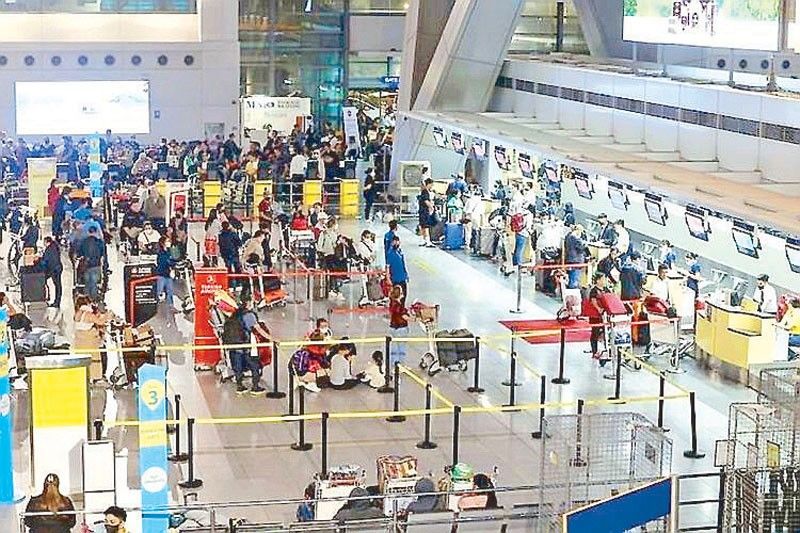NAIA traffic hits 22 million in 6 months

MANILA, Philippines — The Ninoy Aquino International Airport (NAIA) served more than 22 million passengers in the first half of the year on the sustained recovery of air travel in the pandemic aftermath.
The Manila International Airport Authority (MIAA) reported that NAIA traffic surged by 78 percent to 22.22 million in the first semester of the year from 12.49 million in the same period last year.
The main gateway to the Philippines recorded a total of 24.41 million travelers in the first half of 2019, signaling that NAIA is close to reaching its pre-pandemic level again.
Likewise, MIAA said that flight movements in NAIA totaled 135,883 in the first semester, up by 49 percent against 91,091 during the same period in 2022.
In 2019, NAIA posted 137,182 flights in the first half in another indication that air travel is back to normal.
MIAA officer-in-charge Bryan Co said the domestic segment has moved along the lines of pre-pandemic traffic.
The overseas market, meanwhile, has started to pick up pace with the lifting of COVID-19 quarantine restrictions, particularly in East Asian economies.
“We are pleased to experience these surges in statistics – a strong indication that passengers have regained the confidence to travel again,” Co said.
“The double digit surge in NAIA’s flight movement and passenger volume is enough ground for optimism that the aviation industry is steadily heading toward full recovery,” he added.
MIAA, for its part, is supporting the recovery of air travel through multiple programs that seek to improve passenger experience, including the Schedule and Terminal Assignment Rationalization (STAR).
Last July 1, MIAA completed the last phase of STAR by making NAIA Terminal 2 an all domestic hub.
The program transferred all the international flights of Lucio Tan’s Philippine Airlines (PAL) to Terminal 1 and moved some foreign carriers to Terminal 3.
This means that immigration and quarantine officers are deployed to just Terminals 1 and 3 now, allowing the government to focus its manpower in two areas only.
Terminal 4, on the other hand, is left to turboprop flights of regional carriers.
With the rationalization, Co said MIAA was able to raise the capacity of Terminal 2 to 10 million passengers per annum from 7.5 million, with the removal of PAL’s foreign flights in the facility.
“Comforted with the consistent growth in numbers, with airlines introducing new routes and with new airline players coming in, we will pursue without let up our improvement projects especially those that would highly impact the passenger experience inside and outside of the terminals,” Co said.
- Latest
- Trending





























